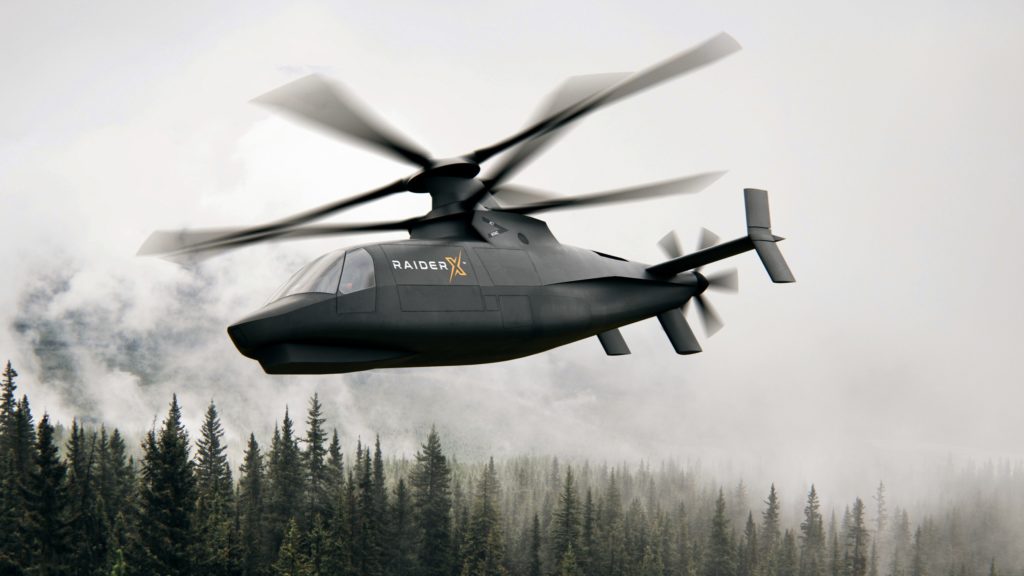
In a shocking development, Army leaders told reporters yesterday they are canceling the Future Attack Reconnaissance Aircraft (FARA) program. The course change will alter long-range strategic aviation plans for the Army since FARA and its associated program elements were a years-long acquisition priority for the service.
The Army first solicited industry in 2018 for prototype designs of a light-armed scout helicopter following the effective retirement of the OH-58 Kiowa helicopter in 2017. Bell and Lockheed Martin’s Sikorsky and their respective designs, the 360 Invictus and Raider X were to compete in a 2024 fly-off with the final selection of a winning prototype in 2025. Now, several years and nearly $2 billion spent dollars later, the manned scout rotorcraft element of Future Vertical Lift (FVL) is dead.
Failure to procure a scout helicopter is now a running trend for the service. Previous unrealized programs include the Sikorsky/Boeing RAH-66 Comanche and the Bell ARH-70 Arapaho, among several other efforts that never matured.
The rapidly evolving battlespace, technological advancements, and observed lessons from current global armed conflict all played a role in the Army’s decision. Unmanned systems are sure to fill in any gap FARA leaves. In an accompanying statement to the cancelation, the service added, “Army leaders assessed that the increased capabilities offered could be more affordably and effectively achieved by relying on a mix of enduring, unmanned, and space-based assets.”
Officials portended a future direction for Army aviation with additional announcements. The Army will work to phase out its aging RQ-7 Shadow and RQ-11 Raven aerial drones. Future Tactical UAS (FTUAS), the unmanned element of FVL, will become a more focused area to promote unmanned systems and sensors as the primary vehicles performing reconnaissance missions.
Army procurement will focus on UH-60M Black Hawks instead of the UH-60V Black Hawk set to succeed the UH-60L variant. The Improved Turbine Engine Program (ITEP) set to power the FARA rotorcraft, UH-60s, and AH-64 Apaches will also stall to free up funding. Efforts will now shift toward acquiring Black Hawk and CH-47F Block II Chinook helicopters. Army aviation will double down on advancing the Bell V-280 Future Long Range Assault Aircraft (FLRAA) project and exploring additional unmanned systems options.
All from FARA is not lost. The Army will continue developing its launched effects program, where it now aims to field short-, medium-, and long-range drones that can deploy from manned aircraft or unmanned systems.
Given the prominence and success of UAS in the Russian-Ukrainian conflict and recent U.S. defense advancements like the Pentagon’s Replicator initiative and Air Force’s Collaborative Combat Aircraft (CCA) project, it should not come as a total surprise that senior Army officials feel an unmanned replacement for the armed scout reconnaissance role is an increasingly realistic option.
In any future conflict with a peer competitor, forward-deployed aviation elements will face stiff air defense resistance, to which rotorcraft are particularly vulnerable. The Army’s focal shift could indicate an admission that advanced unmanned systems can provide more capable battlespace surveillance and targeting collection and engagement at lesser risk to the lives of pilots and other service personnel.
A former naval officer and helicopter pilot, Jon covers a range of Forecast International reports and products, drawing on his 10-year background in military aviation, operations, and education. His previous military assignments include multiple overseas deployments supporting operations in the Arabian Gulf, NATO exercises, and humanitarian missions. Jon’s work is also influenced by his time as a former Presidential Management Fellow and international trade specialist at the Department of Commerce.
Before joining Forecast International, Jon also served as an NROTC instructor and Adjunct Assistant Professor at the University of Texas, where he taught undergraduate courses on naval history, navigation, defense organization, and naval operations and warfare. A lifelong reader and learner, his academic and professional interests include aviation, political and military history, national defense and security, and foreign area studies.




